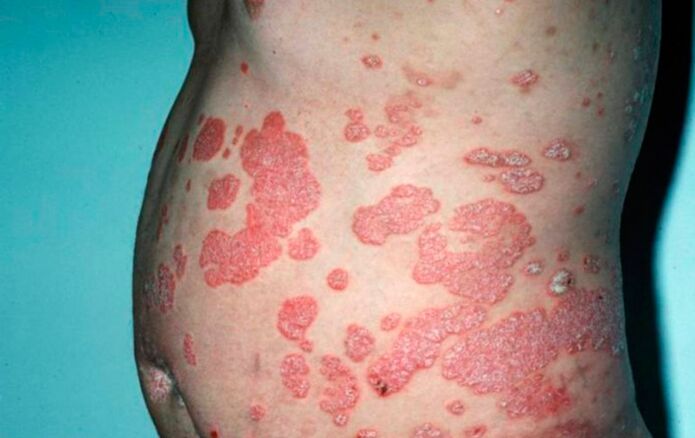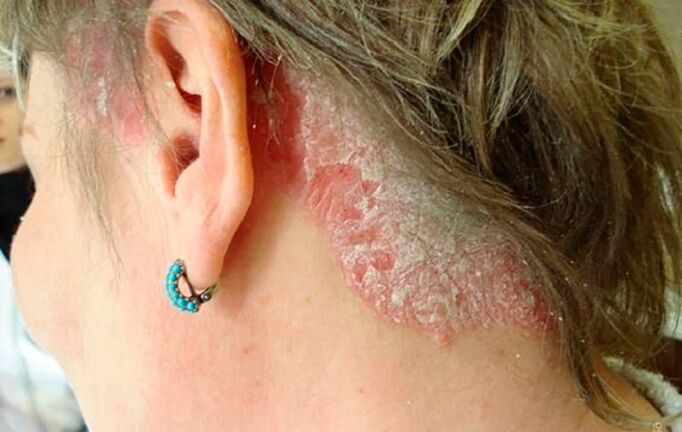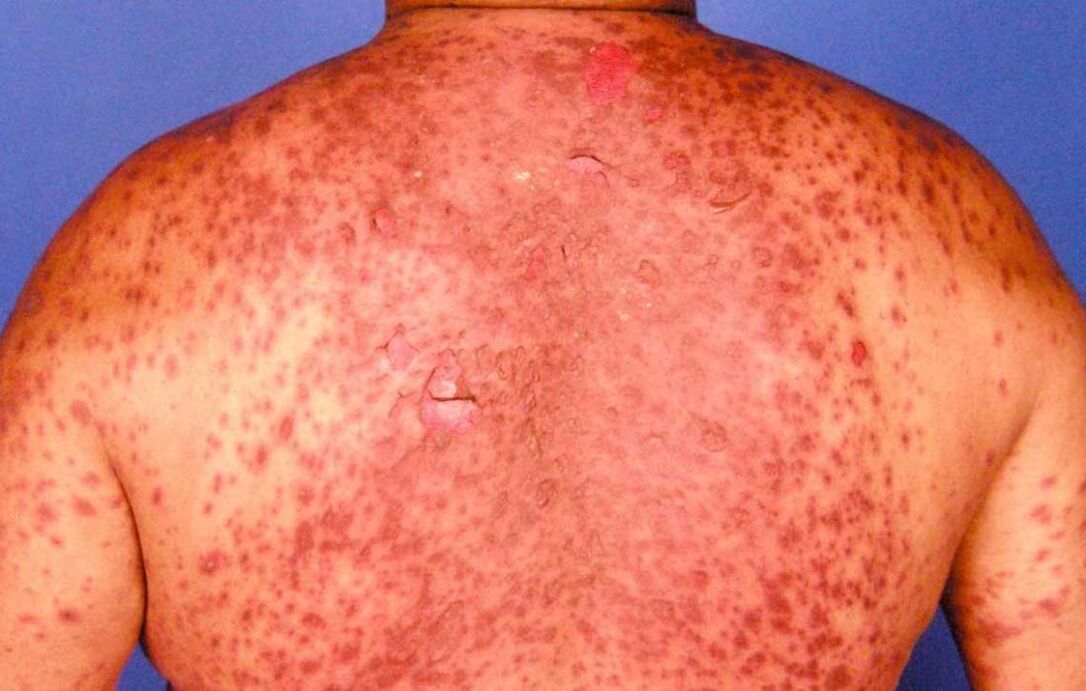
Psoriasis is a long-term and almost incurable non-communicable disease. It mainly affects the skin, nails and joints. Psoriasis can occur in people of any age, even children.
There are several theories about the cause of psoriasis:
- Neurogenic disease theory;
- Theories about endocrine system problems;
- Viral disease theory or metabolic disease theory.
But these theories have not been confirmed by actual science. So far, scientists have concluded that the onset of this disease is influenced by heredity or a person’s genetic predisposition to pathological changes in skin cells.
These cells form in the basal layer and reach the outer stratum corneum to form scales. Genetic factors prove that the disease exists in relatives. In other words: if your relative has psoriasis, it may show up to you or your child.
Factors that affect the appearance of psoriasis
The following factors can affect the appearance of psoriasis:
- Neurasthenia
- Physical and mental shock, body overload;
- Endocrine system diseases;
- Biochemical and enzymatic disorders;
- Hypothermia of the body;
- decrease in immunity.
It is difficult to determine and confirm what caused this disease. They often say that the disease has no obvious cause.
What kind of disease is psoriasis: how does it manifest?
With this disease, pimples and patches appear on the skin. Plaques are pink or red tones on the skin, clearly limited, compacted spots with small light scales. Plaques come in different shapes, but more commonly they are round or oval. They can be located on any part of the body, but are more common in the large joints, sacrum and lower back, and under the hair on the head.
Psoriasis papules are characterized by rapid growth, forming plaques of a few centimeters, which then merge into large skin lesions.
How is psoriasis diagnosed?
The following indicators are important for diagnosis:
- If you try to scrape the pimples, the scales are easy to scatter and form "stearic spots".
- A reddish shiny surface appears on the skin-a speckled terminal membrane;
- If you continue to scrape off the stain, there will be spotting bleeding on its surface-"blood dew".
Stages of psoriasis
For disease-related rashes, the following stages of development are characteristic:
- Progressive stage (small papules appear, which gradually grow up and merge into larger papules over time);
- Quiet period (plaque grows and does not change for a period of time);
- Degeneration stage (the rash turns white, thins and disappears from the surface of the skin).
Depending on the state of the body, this disease can last for a long time.
For the first stage of the rash, the Kebner effect is characteristic: about a week later, new psoriasis lesions appear on the damaged skin.
During the period of skin relief in the elbow or knee area, isolated, so-called "responsible" plaques may remain.
Types of psoriasis
There are several types of the disease:
- Exudative type: swelling and bright appearance of papules with yellow crusts on the surface;
- Follicular form: small papules are confined to the follicular orifice area;
- Palmoplantar psoriasis: the skin of the soles of the feet and palms is covered with cracks and scales, and psoriasis plaques can be seen;
- Seborrheic psoriasis: mainly located on the scalp;
- Psoriasis erythroderma. In this form, the disease is very difficult, the entire skin surface is affected by psoriasis, the surrounding lymph nodes are enlarged, fever, itching, sleep disturbance, changes in blood and urine are observed;
- Arthropathic psoriasis: affects and deforms the joints, restricting their movement. It is characterized by severe pain and swelling in the affected joint area. This is a very painful form of psoriasis and usually causes disability.



In all forms of psoriasis, changes in the nails can be observed: they become cloudy, thickened, and small spots appear, just like poking with a needle.
The disease lasts for many years, has periods of deterioration and health improvement, and has seasonal characteristics: it worsens in the cold and lessens in the warm season.
Psoriasis treatment
Psoriasis should be treated under the supervision of a dermatologist. Treatment is prescribed by optimally combining therapeutic drugs with ointments and physical therapy, as well as limiting animal fats and carbohydrates in foods, alcohol, and spicy foods.
Patients should be under the supervision of a doctor's pharmacy, and they need to have hydrotherapy every year. Suffering from psoriasis, it is recommended to go to radon springs and hydrogen sulfide baths, swim in the sea, and sunbathe.























